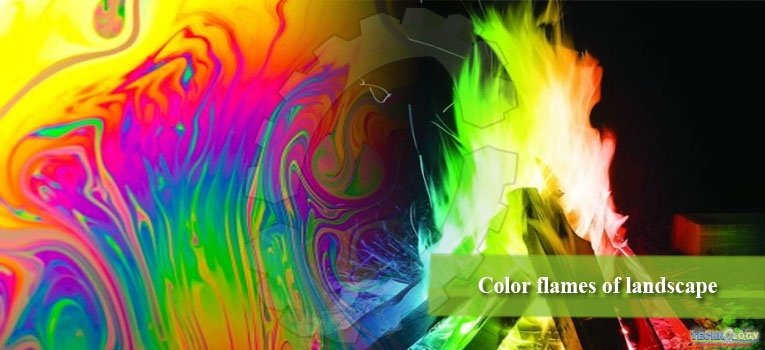A landscape full of colorful and interesting plant combinations generates attention and can direct people toward a focal point. Color, along with form, line, texture and scale, is one of the basic elements of landscape design.

It is a strong design element and can be used to attract attention and guide the human eye. Because of its strength, color can also become a problem when used incorrectly.
Perception of colors : Red, orange, and yellow are considered “warm” colors.
The effect of reds, oranges, and yellows on our senses is to excite.warm colors often associated with heat, fire and the sun. Blue and purple are “cool” colors. As such, they are perfectly suited for meditation gardens, for instance. Cool colors can show a reflection of calmness.
Primary and Secondary colors :
Primary colors, that can be mixed in different ways to make all other colors i. e. blue red and yellow where as Secondary colors, that are resultant mixture of primary colors e. g when blue and yellow are mixed, they make green. When there is discussion about purple colour it is so confusing that whether it is a cool colour or a warm colour, from observations it is precieved that if the range of purple colour hits near blue colour it can be cool colour and if it will be near red range it can be warm colour.
It can be studied by physiologists that the colors have effect on people as different schemes should used in restaurants and other public corners. For example, fast food restaurants typically use warm colors to excite customers and get them in and out the door faster whereas hospitals typically use cool colors in rooms to create a calm and relaxing atmosphere.
Color value :
Lightness and Darkness are the values of the colors. If white added in colors it is called as tint,as if black is added the colour will become darker so called as shade. Addition of grey refereed as “Tone”.
Color intensity :
Perception of colors also varied according to the brightness of the colour. Intensity could be increases when bright colors are used together. In contrast, when shades or tints are used together, the overall effect is softened and less intense.
Color scheme :
What colors to plant, the landscape architect or landscaper creates a theme for the design, or a color scheme. There are at least six different color schemes.
Monochromatic
Analogous
Complementary
Primary
Riotous
Pastel
So, Color builds on the structure and framework of the landscape and may also highlight an area by adding repetition in color that creates unity, visual balance and harmony. Color may not be the most important consideration in an overall landscape, but it has a powerful visual effect and should be considered carefully for best results.